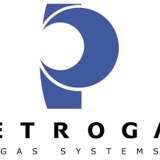Title Page
-
© J Luscombe Associates Limited 2021.
All rights reserved. -
Homeowner/Policyholder/Tenant
-
Survey Location
-
Rainbow International Ref
-
Prepared by
-
Date
Instruction Overview
Instruction Overview
-
Instruction Date
-
Instructing Party
- Homeowner
- Insurer
- Policyholder
- Landlord
- Executor/legal representative
- Tenant
- Other
-
Notes
-
Insurer's Claim Reference
-
Contact Name and Contact Number
-
Insurance Company
- None
- Unknown
- NFUM
- RSA
- LV=
- AXA
- SAGA
- DLG
- Aviva
- Other
-
Notes
-
Instruction Description
-
Instruction Background
-
Visit Date & Time
-
Engineer(s)
-
Engineer's Initial Visual Report - (Kerbside impression of property)
-
External Photo of Property
Risk Assessment
-
ASBESTOS
-
Controls - STOP If in doubt assume it is an ACM. DO NOT DISTURB the material unless qualified & exercising control measures. Sample & make safe by encapsulation or exclusion. Wear PPE & RPE. Record all steps taken & photograph.
-
MANUAL HANDLING
-
Controls - Do not lift unnecessarily. Use lift equipment whenever possible. Get trained help if appropriate.
-
SLIPS, TRIPS & FALLS
-
Controls - Tape down all pipes & cables. Use the shortest run & cover if possible. Photograph your measures. Position equipment safely.
-
EXPLOSION
-
Controls - Map gas runs before excavation. Note in your methodology. Isolate gas/LPG/Heating Oil supply before excavation. No naked flames or smoking.
-
HEIGHTS
-
Controls - No heights work without certification by IPAF or height/ladder training. Excavations to be taped off
-
ELECTROCUTION
-
Controls - Be cable-aware at all times. Check for RCD protection before starting excavation. Use current detector before invasive works. Wear gloves. Check for electric underfloor heading.
-
DISEASE
-
Controls - Stay COVID19 aware. Wear PPE & be mindful of both animal & plant potential infections. Use anti microbial cleaners. If in doubt STOP & seek advice.
-
LONE WORKING
-
Controls - Does someone know where you are? Arrange regular contact & “contact lost” procedure. Keep a mobile phone with you. Do not put yourself at risk.
Other Risks and Controls
-
Risk
-
Control
-
I have carried out a risk assessment & informed others whom it may affect:
Primary Checks
- Manifestation
-
Location
-
Description
-
Evidence
Have any systems or zones been isolated?
-
Is this temporary or permanent
-
Will opening the isolation effect loss rate or aid diagnosis?
-
Notes
External Inspection
-
Notes
-
Excessive output from boiler (condensation pipe/pressure relief valve)
-
Notes
-
Evidence
-
Exterior of property showing signs of damp
-
Notes
-
Evidence
-
Are any overflows from toilets or header tanks wet or showing signs of dripping
-
Notes
-
Evidence
-
Gutter, downpipe or drain issue
-
Notes
-
Evidence
-
Any causes of damp bridging
-
Notes
-
Evidence
-
Any structural faults leading to water ingress (e.g. cracked render, poor pointing, roof/valley issues)
-
Notes
-
Evidence
-
Signs of excessive ground water or aquafer
-
Notes
-
Evidence
Boundary box and stopcock(s)
-
Notes
-
Internal stopcock located?
-
Stopcock functioning correctly?
-
Notes
-
Photo of internal stopcock
-
Boundary box located?
-
Stopcock functioning correctly?
-
Notes
-
Photo of external stopcock
-
Meter present or temporary meter fitted
-
Video the meter for at least 5 minutes to calculate leakage volume. Video for less time if loss is excessive.
-
Meter movement videoed (slow leaks) or observed (significant leaks) with internal stopcock open?
- Yes
- No
-
Water consumption detected?
-
Water consumption quantity over time period? (first red number is 100s of litres next is 10s next is single litres etc.)
-
Video the meter for at least 5 minutes to calculate leakage volume. Video for less time if loss is excessive.
-
Meter movement videoed (slow leaks) or observed (significant leaks) with internal stopcock closed?
-
Water consumption detected?
-
Water consumption quantity or time period? (first red number is 100s of litres next is 10s next is single litres etc.)
-
No consumption with internal stopcock both open and closed indicates NO LEAK from supply fed system(s)
-
Consumption with internal stopcock closed indicates supply pipe leak
-
Consumption with internal stopcock open and no consumption with internal stopcock closed indicates internal leak from supply fed system(s)
-
Consumption with internal stopcock both open and closed indicates internal AND external leak
-
Boundary box test indicates
- Internal leak
- External leak
- Internal & external leak
- No leak detected
- Other
-
Notes
-
Has boundary box been worked on recently
-
If the works have caused leakage the water company to be advised by homeowner/tenant/landlord
-
Notes
-
Evidence
-
Is there excessive water in the boundary box
-
Investigate possible leaking coupling. Salts test the water for chlorides (processed water). Homeowner/tenant/landlord to arrange water company repair if processed water present.
-
Notes
-
Evidence
-
Summary Notes
Boiler survey
-
Location
-
Notes
-
Photo of boiler
-
Boiler make and model
-
Boiler fired by
-
Boiler approx. age
-
Boiler last serviced date
-
Boiler notes
-
Boiler type
-
Small Central Heating header tank dripping
-
Consider sealing the system, pressurising & doing an acoustic survey
-
Is water loss consistent with volume of leakage?
-
Notes
-
Evidence
-
Is the filling loop dry & working correctly
-
Notes
-
Evidence
-
Tundish dry
-
Notes
-
Evidence
-
Excess water from condensation pipe
-
Volume of water from condensation pipe over time period
-
Evidence
-
All pipework around the boiler dry
-
Notes
-
Evidence
Central Heating System
-
Central Heating comments
-
System type
-
System losing pressure
-
Volume of loss & notes
-
Check for acoustic anomalies
-
Consider sealing the system, pressuring & doing an acoustic survey
-
All radiators and/or underfloor heating working properly
-
Why? Is this relevant?
-
Notes
-
Possibility of redundant pipes from moved/removed radiators (e.g. under kitchen units or for remodelling)
-
Notes
-
Ask customer if property has been modified or extended or radiator(s) moved or removed.
-
Pipework on all radiators dry. (Do not forget under unit radiators or radiators in strange locations e.g. outside toilets)
-
Can leaks be stopped? Is water loss consistent with volume of leakage?
-
Notes
-
Evidence
-
Any signs of damp around the radiators (e.g. walls/floors discoloured, skirtings blown, grout cracked/damp, hollow tiles)
-
Source of damp visible? Is water loss consistent with volume of leakage?
-
Notes
-
Evidence
-
Does the property have underfloor heating
-
Are the manifolds dry and in order
-
Notes
-
Evidence
-
Are the pressures at the manifold balanced
-
Notes
-
Evidence
Hot and cold supply (internal)
-
Notes
-
All joints and pipework dry
-
Consider sealing the system, pressurising & doing an acoustic survey if low pressure system (e.g. fed from header tank)
-
Is water loss consistent with volume of leakage?
-
Notes
-
Large header tank dripping
-
Could be hot or cold water system leak. Consider sealing the system, pressurising & doing an acoustic survey
-
Notes
-
Evidence
-
Ask customer has the property been modified or extended - especially bathrooms, toilets, utility rooms or kitchens. Think pipework & radiators.
-
Possible redundant pipework
-
Notes
-
Evidence
Appliances
-
Notes
-
Supply to all white goods dry
-
Notes
-
Evidence
-
All toilet cisterns shutting off
-
Notes
-
Evidence
Sanitaryware (e.g. Showers, Baths, Hand Basins, Bidets, Toilets etc.)
-
Where you have multiple items with issues (e.g. two showers and a bath) add a new Sanitaryware section for each item
-
Location & Sanitaryware Item
-
Notes
-
Sanitaryware traps in order
-
Notes
-
Evidence
-
Sanitaryware base in order
-
Notes
-
Evidence
-
Grouts/mastics in order
-
Notes
-
Evidence
-
Enclosures in order
-
Notes
-
Evidence
-
Sanitaryware fittings in order
-
Notes
-
Evidence
-
Taps/Regulators and hidden pipework in order
-
Notes
-
Evidence
Wastes
-
Notes
-
All accessible joints and connections dry
-
Notes
-
Evidence
Salts Test
-
Location
-
Notes
-
Nitrates - small pot (Red/Brown Result)
-
Ground water/rising damp
-
Notes
-
Evidence
-
Chlorides - large pot (Yellow Result)
-
Treated water from a system
-
Notes
-
Evidence
-
Inconclusive (Yellow/Red Results)
-
Possibly rain water
-
Notes
-
Evidence
Dye Test
-
Dye test carried out on waste(s)
-
Notes
-
Evidence
Other Potential Causes
-
Has there been a previous escape of water or flood at the property
-
Has the property been dried properly
-
Notes
-
Evidence
-
Is there an issue with an adjoining property
-
Notes
-
Evidence
-
Is there an issue with any DPM or DPC
-
Notes
-
Evidence
-
Signs of Bridging or Penetrating Damp
-
Notes
-
Evidence
-
Is condensation an issue
-
Notes
-
Evidence
-
Ventilation under ground floor in order
-
Notes
-
Evidence
-
Capped chimney
-
Is there adequate ventilation
-
Consider endoscope survey
-
Notes
-
Evidence
Secondary Checks
- Pipework Survey
-
Use CAT & Genny to scan for pipework. Scan Gas/LPG/Oil , hot & cold supply, central heating (multiple rads and flow/returns)
-
Pipework survey carried out to establish routings
- Moisture Mapping
-
Location
-
Excessive moisture discovered
Excessive Moisture Area
-
Notes
-
WME/MC reading(s)
-
Evidence
Infrared Camera Survey
-
1)Cold taps running slowly 2) Hot taps running slowly boiler highest setting 3) CH on highest setting 4) Boiling water in wastes
-
Notes
Infrared Camera Survey Anomaly
-
Use "Automatic" mode initially find anomalies then switch to "Manual/Lock" with 2 degree temperature Span and move temperature Level into anomaly temperature range for detailed colour graded image.
-
Location
-
Notes
-
Evidence (Context and detailed photo(s))
Acoustics Survey
-
Notes
Acoustics Survey Anomaly
-
Location
-
Notes
-
Evidence
Endoscope Survey
-
Notes
Endoscope Survey Anomaly
-
Location
-
Notes
-
Evidence
Supply Pipe Survey
-
Notes
Location
-
Location
-
Notes
-
Evidence
Other Inspection/Survey Works
-
Notes
Other Works
-
Notes
-
Evidence
Tracer Gas Survey
- Tracer gas survey
-
Drain down the system being Tracer Gassed. Securely fix hose(s) to drain points with jubilee clip(s). If central heating - check for multiple drain cocks/spigots, open bleed valves (highest points first). Hot/Cold water systems - open taps to assist drain down.
-
Insert gas to 0.5 Bar initially - check for leakage. Then raise pressure to 1.0/1.5 Bar gradually. Do not increase pressure over 1.5 Bar other than in exceptional circumstances.
-
System/location
-
Notes
-
System drained down
-
Expect the Tracer Gas to take longer to manifest
-
Reason/notes
-
Boiler switched off/isolated
-
BOILER MUST BE SWITCHED OFF/ISOLATED
-
Notes/Reason for not isolating the boiler
-
Is the water clear or very discoloured when draining down
-
All radiator bleed valves on central heating system closed or taps on hot/cold water system closed
-
Close all radiator bled valves and/or taps before introducing gas
-
Notes
-
Central Heating - All radiators fully open on both sides. (note original settings and reset after)
-
Ensure all radiators are fully open before introducing gas
-
Notes
-
Central Heating/Hot Water Heating - All zone/diverter valves manually set to open
-
Manually set all zone/diverter valves open including hot water system.
-
Central Heating - All automatic air bleed valves closed. Check non-vented boiler and CH high points (loft/airing cupboard)
-
Ensure all bleed valves are closed before proceeding. System unlikely to hold pressure.
-
Gas filling point
-
Evidence
-
Gradually increase Tracer Gas pressure from 0.5 Bar to 1.0/1.5 BAR
-
Maximum tracer gas pressure used
-
Photo of pressure gauge on gas rig
-
Pressure loss
-
Pressure loss over time period
-
Gas detected internally
-
Notes
-
Evidence
-
Gas detected from hot water tap(s)
-
Indicates heating coil in water cylinder has failed
-
Notes
-
Evidence
-
Gas detected externally
-
Notes
-
Evidence
-
Notes
-
System refilled
-
Reason/notes
-
Automatic air bleed valves opened
-
Open all automatic air bleed valves
-
Notes
-
Radiators reset
-
Reason/notes
-
Inhibitor added to system
-
Reason/notes
-
Additional charge may apply
-
Amount of inhibitor added
-
Leak sealing agent added
-
Additional charge may apply
-
Reason/notes
-
Amount of sealing agent added
Asbestos Removal
- Asbestos Containing Material Removal
-
Are you qualified to remove Asbestos Contain Materials
-
DO NOT PROCEED WITH REMOVAL - REMOVAL MUST BE CARRIED OUT BY QUALIFIED OPERATIVES ONLY
-
Location
-
Is the ACM removal non licenced works (either presumed or confirmed)
-
DO NOT PROCEED UNLESS YOU ARE A LICENCED ASBESTOS REMOVAL OPERATIVE
-
Are you a licenced asbestos removal operative
-
ACM Type
- Thermoplastic Tiles
- Bitumen
- Textured Coating
- Cement Sheet
- Asbestos Paper
- Linoleum
- AIB (small area & good condition)
- Other
-
Description of material
-
Continue under controlled ACM removal conditions including RAMS and appropriate PPE/RPE
-
Notes
-
Before photos
-
After photos
-
DO NOT PROCEED - REMOVAL MUST BE CARRIED OUT BY LICENSED OPERATIVE(S)
-
ACM Type
- Thermoplastic Tiles
- Bitumen
- Textured Coating
- Cement Sheet
- Asbestos Paper
- Linoleum
- AIB (small area & good condition)
- Other
-
Description of material
-
Continue under controlled ACM removal conditions including RAMS and appropriate PPE/RPE
-
Notes
-
Before photos
-
After photos
Excavation
- Excavation
-
HAS THE OCCUPANT GOT SUFFICIENT WATER RESERVES FOR THEIR NEEDS IF THE WATER SUPPLY IS INTERRUPTED. Filled containers, pots, pans, cisterns and/or bath.
-
Customer must accept our terms & conditions.
We will carry out the excavation using best endeavours
Making-good the excavation is customer’s responsibility -
A leak might not be found
-
Further excavation works may be necessary
-
We will use best endeavours, however, we may cause collateral damage whilst excavating including striking a water or gas pipe or other service. Any repair or making-good is the responsibility of the customer.
-
As a result of the excavation the customer understands and excepts that utility services maybe disrupted until such time as a repair or other works can be carried out.
-
Customer contact advised of reasons for excavation prior to works commencing - our terms & conditions apply regarding excavation
-
Reason customer not advised
-
Does customer contact have plans of pipework and other service routings
-
Customer contact advised we accept no liability for any disruption and/or repair to any utility service we might strike or disrupt or otherwise damage.
-
Reason customer contact not advised
-
Is there NOW or HAS THERE EVER BEEN a gas/LPG/oil supply to the property
-
Has the gas/LPG/oil mains supply been isolated
-
GAS/LPG/OIL SUPPLY MUST BE ISOLATED BEFORE EXCAVATION
-
Notes
Location of Excavation
-
Location of excavation
-
Reasons for excavation
- Infrared Camera Survey Indicates Anomaly(ies)
- Acoustics Survey Indicates Anomaly(ies)
- Tracer Gas Detected
- Elevated Moisture Levels
- Visible Manifestation
- Salts Test Results
- Visible Defect(s)/Anomaly(ies)
- Other
-
Additional notes supporting excavation
-
Is there any wet or electrical underfloor heating in the area of excavation
-
Isolate electrical underfloor heat before proceeding
-
Proceed with extreme care
-
Use pipe detector or Infrared Camera to detect wet pipework
-
Has the area been scanned for pipes, cables or other obstructions
-
Reason area not scanned (Area should be scanned to avoid risk of death, injury or damage)
-
Before photos
-
After photos
-
Any collateral damage caused
-
Homeowner advised
-
Reason why homeowner not advised
-
Notes
-
Evidence
-
Additional notes
Conclusion
-
Discussion
-
Conclusion
Repair carried out
-
Type of repair
- Permanent
- Temporary
- Parts fitted
- Other (see notes below)
-
Notes
-
Cost to be charged to party instructing works
-
Cost notes
-
Refer to insurers
- Yes
- No
- Already Referred/Instructed by Insurer
- N/A
-
Reason (e.g. Property damage due to Escape of Water and/or requires professional drying to mitigate structural damage)
- Property damage due to Escape of Water
- Professional drying required to mitigate structural damage
- Danger of mould damage
- Other (see notes below)
-
Notes
-
Notes
-
Cost recovery opportunity (subrogation )
-
Notes
Recommendation
-
Recommendation(s)
- Book revisit to continue survey
- Situation to be monitored by customer contact (see notes below)
- Permanent repair required (see notes below)
- Re-route pipe work
- Replace water cylinder
- Replace boiler
- Refer to boiler engineer (see noes below)
- Check/Replace Pressure Relief Valve (PRV)
- Check/Replace Pressure Expansion Vessel
- Flush/Service Central Heating System
- Refer to Water Utility Company (see notes below)
- Refer to Building Surveyor (see notes below)
- Refer to Insurers (see notes below)
- Refer to neighbour (see notes below)
- Refer to Landlord/Letting Agent (see notes below)
- Other
-
Notes
-
Does the property require professional drying
-
Reason
- Property damage due to Escape of Water
- Professional drying required to mitigate structural damage
- Danger of mould damage
- Other (see notes below)
-
Notes
Time Summary Key Account Instructions)
-
Time on Site (Total Time)
-
Time on Tracer Gas
-
Time on Excavation
-
Time on Asbestos Removal
-
Other Time Details











